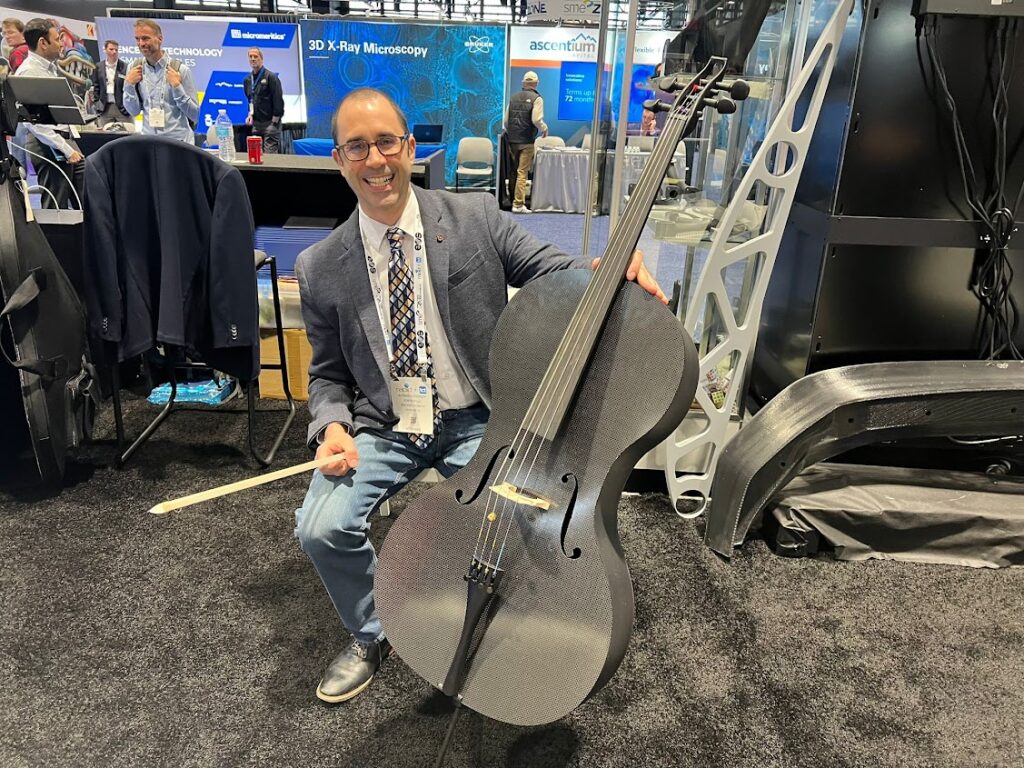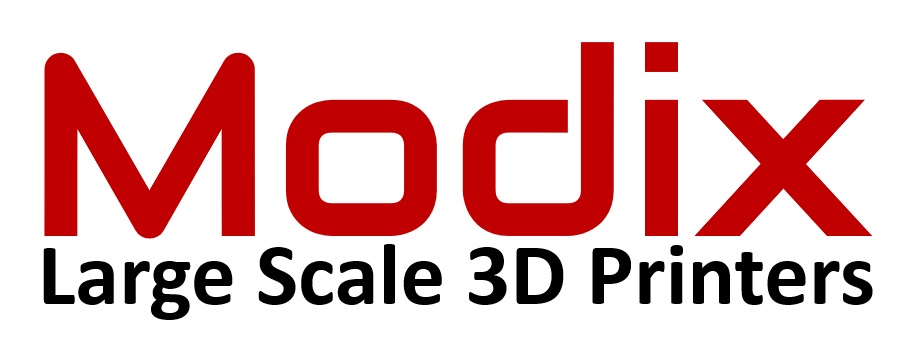Case Study
Forte3D’s Revolutionizing Classical Musical instruments.

The Company
Forte3D, a cello-making company, has innovated on this centuries-old instrument with 21st-century materials to make the world’s first 3D printed carbon fiber cello. Using machined carbon fiber for its back and front panels, as well as 3D printed components along the body, neck, and pegbox, Forte3D builds a modernized cello that the company founder Alfred Goodrich states delivers “a world-class sound for a fraction of the price.”
The Challenges and Solution
The Challenges and Solution
A significant challenge that can limit any carbon fiber project is the difficulty in creating molded carbon fiber parts. Any carbon fiber part that is not shell-shaped, such as a cello neck or tailpiece, requires significant investment in custom tools that are made for one specific design. By using Modix’s large-format 3D printers, this tooling investment can be eliminated, and more complex parts can be created for fractions of the cost and tooling requirements.
Another benefit of using Modix’s large-volume 3D printers to create parts for the carbon fiber cello is that the polycarbonate filament used by Forte3D is softer than the wood and resin that is traditionally used to manufacture the parts that Forte3D 3D prints. This allows the ribs and neck to absorb ancillary frequencies that would otherwise take away from the sound quality of the instrument.

The Social Impact
Forte3D has made waves in the additive manufacturing and music industry. Their internationally patent-pending design employs innovative physics to enable the tops of the cellos to have a shape more akin to the cone of a speaker, with a concave profile rather than a convex one seen in traditional wooden cellos. Instead of utilizing a rigidly arched top, as is customary in traditional cellos, Forte3D tops rely on tensile strength to support the bridge, flexing inward in a manner similar to the surface of a trampoline. This unique hybrid design incorporates two flat pieces of carbon fiber, precision-cut using CNC technology, serving as both the top and back of the instrument. This groundbreaking evolution in instrument-making enhances the propagation of vibrations and sound, resulting in a rich and finely-tuned tone. Due to the significantly reduced mass of our cello’s top and back, as compared to traditional cellos, this reduction in weight is transformed into pure acoustic energy.
Forte3D uses the Modix BIG-60 to create the smaller and difficult-to-print components of the cello, such as the fingerboard and tailpiece. While not all components of the cello are 3D printed (notably, the bridge is wood and the front/back panels are carbon fiber, for sound quality purposes), most structural and technical components are 3D printed out of black polycarbonate, giving the cello a dark finish to complement the dark tones of the carbon fiber panels.
The ribs of the cello, which give the cello its internal support, are 3D printed on a Modix 120X, due to the large size of a cello requiring one of the largest consumer 3D printers available.
Other tips: Hiding the Z-seam near the bottom of the cello (near the end pin, which raises the cello of the ground while supporting it at the tail gut) prevents it from being seen during a performance. Most FDM slicers allow the user to determine how the Z-seam is placed.
Information box:
Company: Forte3D
Application: Musical Instrument Industry
Vertical: End-Use Product
Printers: Modix 120-X, Modix BIG-60 V3

